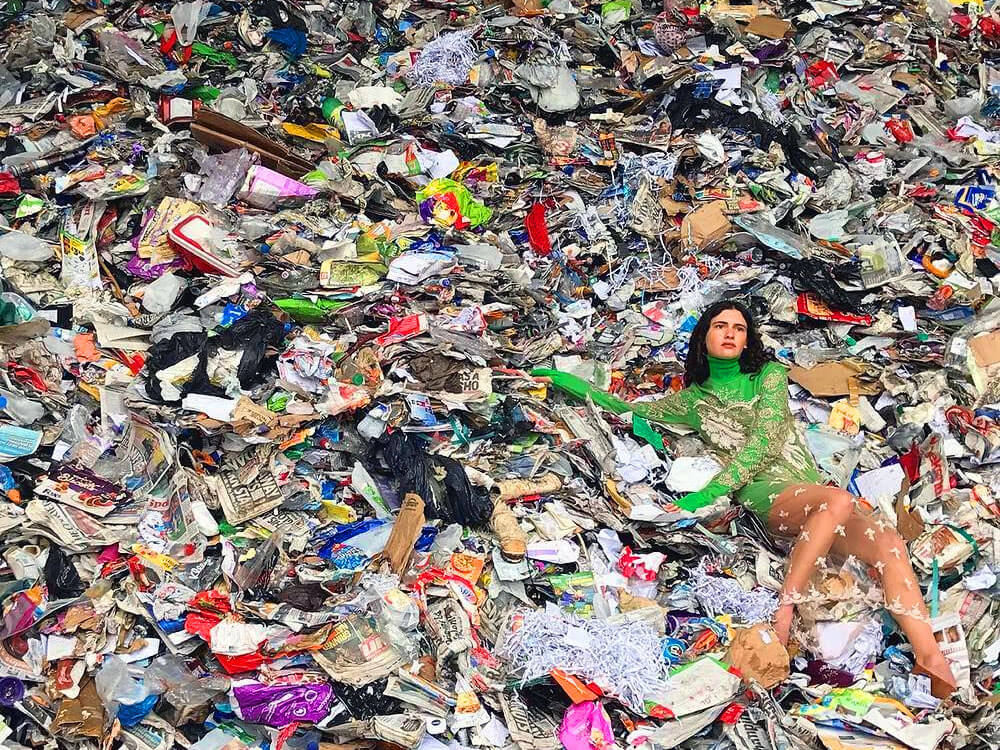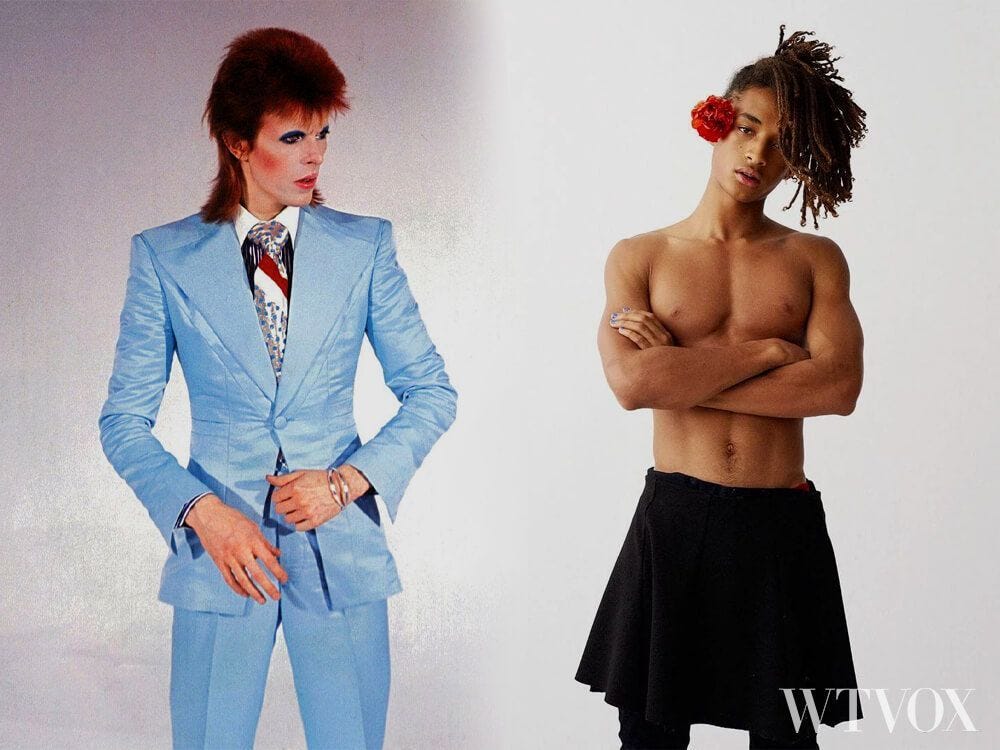Fashion waste is costing the global economy more than $400 BILLION every year, according to a recent World Economic Forum report.
And this is just the economic impact of fashion waste.
Beyond economic loss, fashion waste leads to environmental disasters.
Here are some of the most eye-opening facts about fashion waste, and how to solve it.
| What’s in this article: |
How much clothing is thrown away each year?
On average, consumers throw away 60% on their clothes in the first year.
In 2020 an estimated 18.6 million tones of clothing will end up in a landfill.
The Ellen Macarthur Foundation reports that if this trend continues, over 150 million tonnes of clothing waste will clog landfills by 2050.
Imagine this…
With each second that passes by, a truck worth of textiles is piled into a landfill.
An average dump truck is 76 cubic metres in diameter.
When discarded, that dump truck covers 10-14 cubic yards of waste.
Simply put, for EVERY SECOND you’re reading this article, 7.6 to 10 cubic meters of discarded textiles and fabric waste is being dumped.
It also means that fashion is a massive contributor to the 1.2 billion tones of greenhouse gas emissions released each year.
SHOCKING, isn’t it?
Even worse, as the data released about the waste generated by the fashion industry doesn’t get any better.
Fashion waste problem
Clothing manufacturing creates over half a million tonnes of microfibre pollution that ends in the ocean.
Half a million tones of microfibre are the equivalent to 50 billion plastic bottles, each year.
And when it comes to plastic waste, we’re all aware of the serious damage caused by the plastic in the ocean!
You don’t have to scroll too long on social media before you come across a post about plastic ocean pollution.
Plastic waste, as part of fashion waste, is a global problem that impacts the whole world.
It does not impact just the environment and ocean life, but also local tourism…
… see Phi Phi island for example.
Moreover, a recent worldwide scale study has identified microplastics in commercial table salt, within 16 countries, on six continents.
Even worse, microplastic has been found in everyday foods such as beer, honey, and even sugar.
However, the problem with fashion is BEYOND textile waste.
In one of the biggest stories surrounding luxury fashion in 2018, reporters disclosed that Burberry burned £40m worth of merchandise.
The brand wanted to retain brand exclusivity while keeping stock scarcity high.
Just imagine the negative impact the resulting CO2 and other toxic gasses emissions had on the environment.
The scandal had left Burberry reconsidering their garment waste management strategy.
Now the label is using discarded and unwanted stock and upcycle them into new creations.
Fast Fashion Problem
The luxury segment isn’t solely to blame for the industry’s negative impact on the environment.
The biggest problem is fast fashion.
Partly due to social influencer marketing, fashion consumption has changed dramatically.
“Customers no longer shop by season, they shop by influencers,” said Laurenti Arnault, CEO of Wardrobe of Tomorrow, an online marketplace dedicated exclusively to sustainable luxury brands.
And that’s so true.
Social media has created and reinforced the fast fashion business model.
People want to keep up with celebrities and their looks and styles.
As a result, the fashion industry has DOUBLED its production in the last 15 years.
In the same time, the times we wear garments before we throw them away has HALVED!
Source: Ellen MacArthur Foundation
The pressure of social media has left the industry in a serious battle of supply and demand.
But, quenching one’s stylistic thirst comes at a huge price.
The manufacturing process behind fast fashion is scary.
For example, textile dyeing alone is the second highest contributor to water pollution, after agriculture.
Furthermore, fast-fashion creates, annually, over $500 bn worth of waste.
The waste comes from discarded materials, under-utilised clothing, and lack of recycling processes in place.
It is heartbreaking seeing the level of impact fast fashion has on the environment…
… all for the sake of ‘looking good’.
So how do we end the vicious circle of fashion waste?
How do we, and manufacturers, work towards reducing the fashion industry pollution?
Waste Management In Fashion Industry
The are several initiatives, both the industry and consumers can take, to combat fashion waste.
Moreover, these initiatives can help with recycling and reducing fashion’s carbon footprint.
To start:
-
We must support brands working to improve the environment.
As consumers, we are responsible to clean up our own act.
The first step is to support slow fashion brands.
Support emerging sustainable fashion labels using eco-friendly and cruelty-free materials.
Designers working with certified materials such as plant-based leather alternatives and organic fabric.
Labels like Anita Vitek …
and Edward Mongzar.
-
We must put emphasis on circular innovation in fashion.
Some of the leading sustainable fashion designers are putting a lot of emphasis on circular fashion innovation.
For example, the use of recycled materials in their products, as well as upcycling techniques their product lines, is imperative.
Stella McCartney, Mara Hoffman, and Marine Serre are just some of the big labels taking the word ‘sustainability’ and acting on it.
Also, these brands have innovated their manufacturing methods to reduce waste, toxicity, and environmental impact.
These labels take discarded fishing nets, plastic bottles, and even grounded coffee and turned them into amazing couture.
-
We must slow down fast-fashion consumption.
Fashion could do with a serious slowing down.
Yes, it is great to have and wear new styles every week.
But does the temporary ‘good feeling’ outweigh the negative impact of fast-fashion on the environment?
Slow fashion means a return to seasonal styles.
A return to limited product lines.
-
Finally, we must ensure the recycling of our own clothes.
Of course, fashion starts with us, consumers and ends with us.
The power to change is in our hands. And, when brands are trying to help, we should be first to act.
H&M has launched an initiative of refunding £5 – in the form of a voucher – for every bag of unwanted/old clothes you bring in.
Zara has planted fashion waste collection bins across its Europen stores since 2016…
…and Nike has an excellent ‘Reuse a Shoe’ programme.
Of course, there’s still a lot of greenwashing in fashion.
But at least, there’s a starting point.
Eventually, brands will realise that consumers are demanding a change for the better.
Now it’s your turn…What is the most shocking fashion waste fact you know of? What do you think is the solution to end the fashion waste problem? What are you doing to change your fashion consumption? Would love to hear your thought and comments below! |






